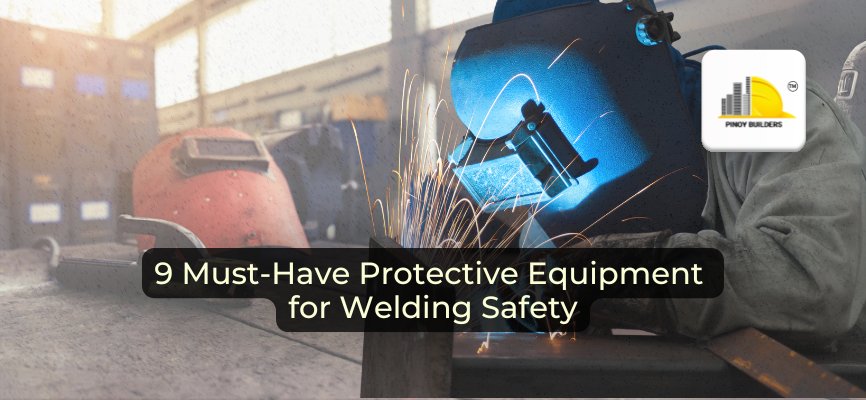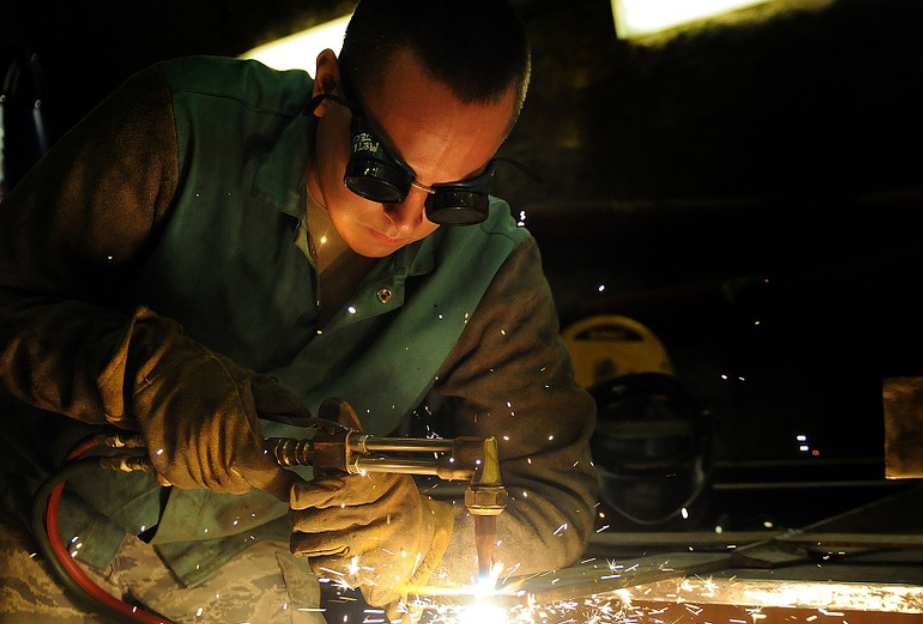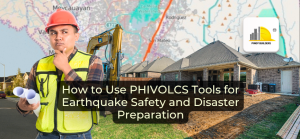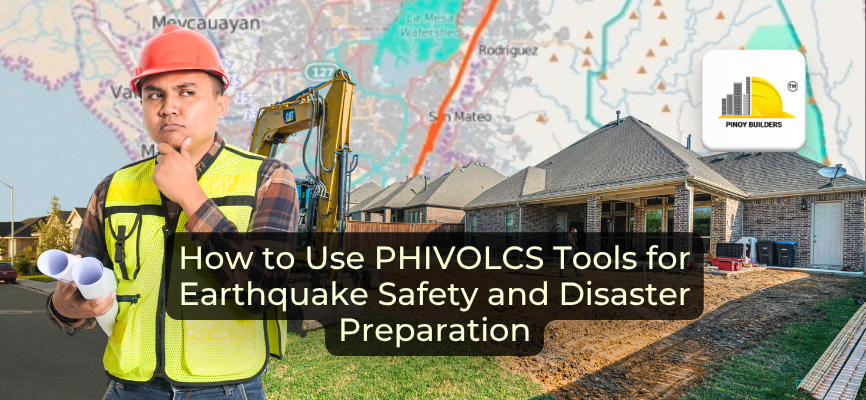The construction industry relies heavily on welding. This is due to the welding industry’s importance in framing every construction project. You’ll need welders to come in and fuse every metal item, whether it’s a large or tiny structure.
In addition to buildings, welding is also essential in the construction of bridges and agricultural and farming facilities. It’s also utilized in petroleum and natural gas pipelines. It’s also particularly important when building iron constructions near water. Because these constructions could corrode, and typical fasteners like nuts and bolts can’t be used to connect two pieces of metal. In this situation, welding is the best method for joining the metals together.
Welders, like other professionals, are required to put their safety first and wear the appropriate protective gear.

Welding Safety Equipment
The safety of everyone on the welding crew is of the utmost importance. Welding safety equipment protects the welder from health and safety hazards in the workplace by preventing heat-related injuries. Welder helmets, gloves, eye protection, high visibility clothing, safety footwear, and respiratory protective equipment are all examples of this type of safety gear.
When it comes to welding, the risks include everything from hot metal burns to arc burns to loss of hearing or vision to dismemberment. Welding safety equipment must be used to address all of these possible concerns.
Welding Safety Equipment Checklist
According to the Department of Labor and Employment (DOLE)’s Occupational Safety and Health Standards, all workers or persons directly engaged in welding or cutting operations shall be provided with goggles, helmets, or head shields fitted with suitable filters lenses and hand shields; and suitable aprons.
Also, all persons directly assisting in welding or cutting operations shall also be provided with gloves, goggles, or other protective clothing, as may be necessary.
DOLE also mandates that people welding or cutting in tight spaces must be protected from inhaling any fumes, gases, or dust by providing approved types of respiratory protective equipment and local exhaust and general ventilation system to keep fumes, gases, or dust within allowable concentrations or threshold limit values.
Welding gear and equipment are essential whether you plan on making a profession out of it or just using your newfound abilities for your own DIY projects. Let’s dig deep with this safety and protective equipment!
1. Welding Goggles
Welding goggles shield the welder’s eyes temporarily while he or she is welding or cutting. The purpose of this safety equipment is to protect the eye not only from heat and visual radiation but also from welding-related flying debris sparks.
As visible light waves, the welding process always creates powerful ultraviolet and infrared. However, UV and infrared radiation can be perceived indirectly and cause eye damage in welders.
Take Note: Welding goggles come with a variety of lens numbers to meet your specific demands. Filters designed for gas welding will not work with arc welding. Because arc welding necessitates the employment of deeper lens colors.
2. Welding Helmets
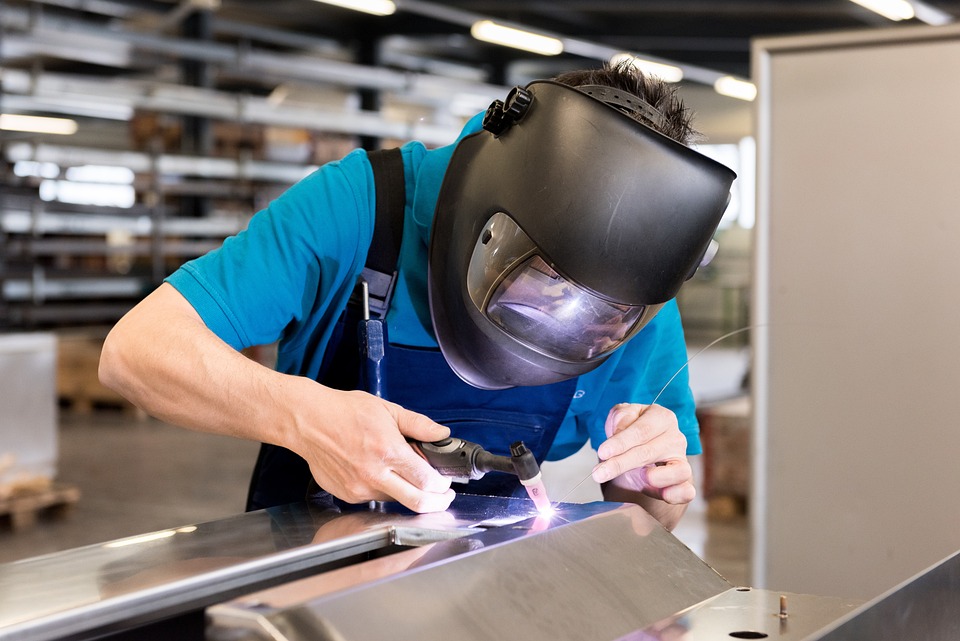
One of the most crucial items of personal protective equipment a welder must wear is a welding helmet, sometimes known as a “hood.” The ideal helmet shields the eyes and skin not only from sparks but also from ultraviolet light, which can impair eyesight and infrared rays released by the arc.
Welding helmets are now available in a variety of colors and styles that are pleasing to the eye. This cosmetic aspect is, however, mixed with a functional aspect that necessitates a light helmet that can be comfortably worn for a full day’s work. To lessen the danger of neck ache or weariness after wearing the helmet all day, the optimum helmet is roughly 20 oz lighter.
3. Welding Hats

In order to keep the welder’s hair and head safe, welding headgear is the next piece of welding safety equipment.
The primary purpose of this piece of equipment is to give additional safety while minimizing the pain of a welding helmet. Cotton and cotton thread is commonly used in the sewing of welding helmets in order to reduce the likelihood of a flame.
4. Welding Gloves

In order to keep welders’ hands safe, these gloves are recommended. These include the protection from electric shock, intense heat, UV and infrared radiation as well as a better grip for the welder.
Welding gloves made of leather are an excellent choice for a welding procedure involving high temperatures. These gloves are divided into three categories based on their durability. TIG welding gloves, for starters, are constructed of goat, cow, or pork skin. MIG welding gloves, on the other hand, are constructed of pig, cow, or deerskin. Finally, use leather welding gloves produced from cows or deer.
5. Welding Apron
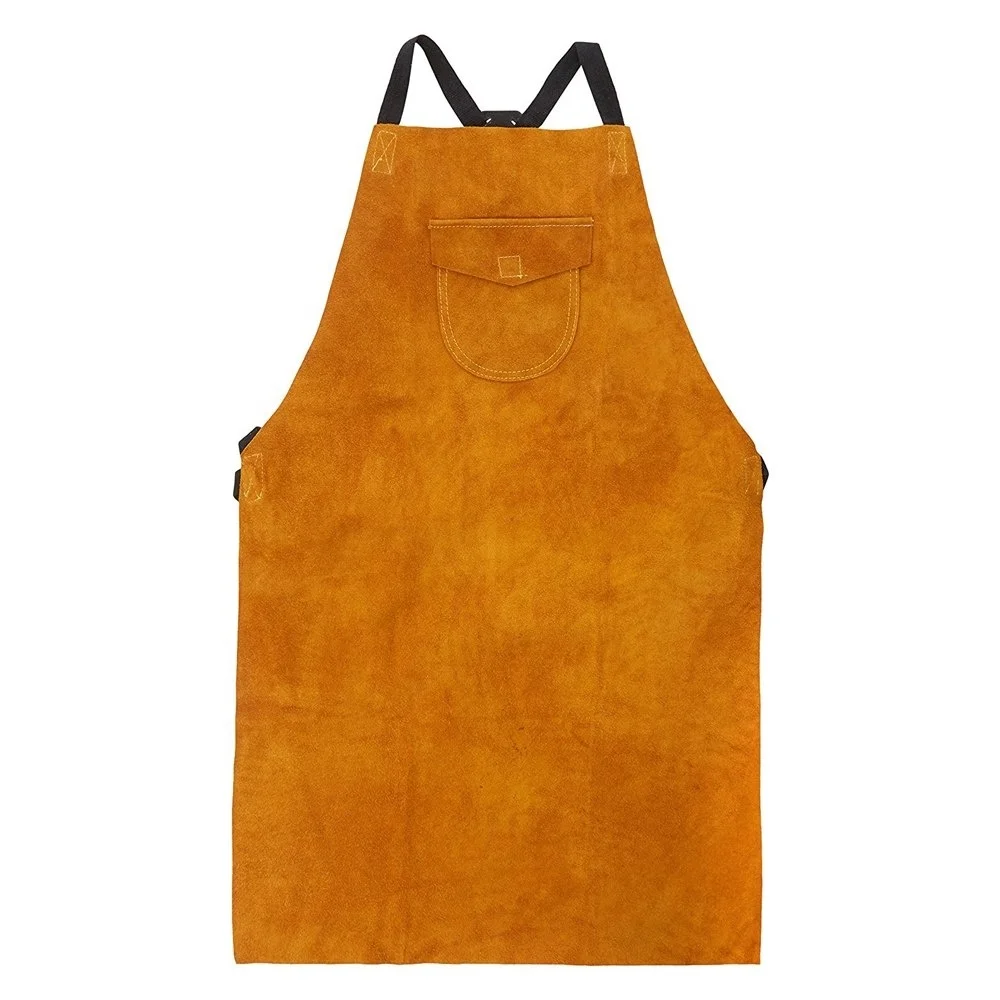
Durable materials such as cowhide or swine skin should be used to make an excellent welding apron. Never use or wear a plastic or polyester apron while welding since it can melt into the welder’s skin. When the welder’s task requires constant exposure to extreme heat or open flames, a flame-resistant apron is the best option.
The half apron, which protects the waist down, and the full apron, which protects the entire front side of the welder and resembles a chef’s apron, are the two most common varieties of welding aprons. Heavy denim and cotton were chosen as the primary fabrics for aprons.
6. Welding Jacket

The welder must weigh the pros and cons of each form of welding clothing before making a final decision.
Wearing a fire-resistant jacket is essential when working in a workplace that is constantly bombarded with high temperatures, powerful sparks, and the threat of molten metal. Flame-resistant cotton and leather are among the most commonly used materials for clothing.
Cotton coats can be the ideal combination of protection, affordability, and convenience. The problem with this form of jacket, however, is that it doesn’t provide adequate protection for all welding processes. Leather jackets have long been regarded as a need for welding because of their high resistance to fire and their ability to keep welders safe.
7. Welding Boots
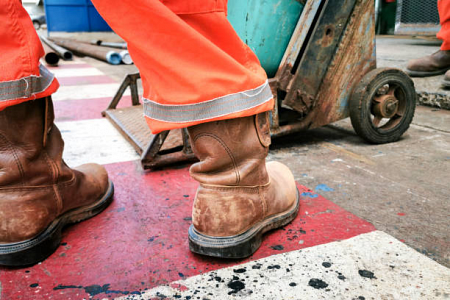
Photo Courtesy: Webrivaig.com
Shoes that can endure sparks and large things falling on a welder’s feet are necessary for welding work. Welding boots look like regular boots at first glance, but the leather covering the laces and the top differentiate them.
There are two primary purposes served by a proper set of welding boots. A few things to note about leather welding boots: they’re heat resistant, but also water-resistant. First of all, welding boots keep the foot from hurting or numbing for long periods of time while the welder is at work. Because of this, the welder is able to weld in the most ideal conditions without any difficulties.
8. Hearing Protection/Earplugs

Photo Courtesy: Weldingis.com
Welding is a loud activity by nature. As a welder, hearing protection is essential, and ear muffs or earplugs are a must in order to block out the noise as you work.
Earplugs, semi-insert earplugs, and earmuffs are the three most common types of hearing protection. Hearing protection is chosen based on some factors, one of which is noise level. The most critical component, however, is that the hearing protection must keep noise out of the welder’s ear and that he or she is comfortable wearing it.
9. Welding Respirator
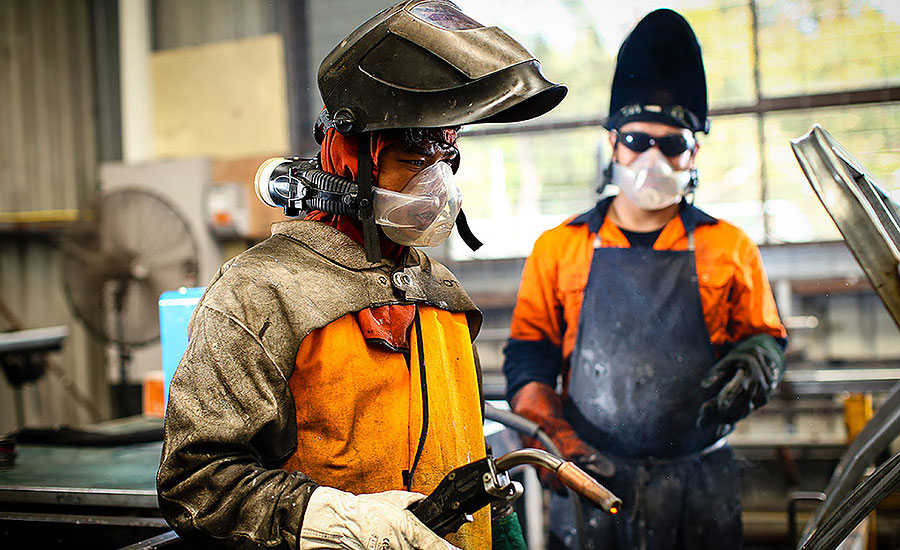
Photo Courtesy: ISHM.com
Welding gases contain extremely small and dense metal oxide particles, which create a residue during the welding process. Several factors, including the type of metal and the process of welding, influence the intensity of weld fumes.
As a protection, a welding respirator is the best option. For both amateur and professional welders, choosing the proper welding respirator is essential.
Currently, many designs can be used to control the amount of smoke in the workplace. Half-mask respirators, powered water purifying respirators, and supplied air respirators are examples of these. A welder can lower the risk of major health problems such as metal fume fever, bronchial asthma, pulmonary fibrosis, and lung cancer by wearing a breathing mask.
Welding is a hazardous profession, and beginners need to be aware of the dangers. The rewards of welding are undeniable, but the dangers are just as real, too. If you don’t take proper safety precautions, you could injure yourself or someone else. Fortunately, safety equipment and practices have been created by the welding industry to reduce the potential for injury.
CITATIONS:
WELDING CLOTHING AND PROTECTIVE EQUIPMENT. (2020, July 23). Waylander Blog. Retrieved November 4, 2021, from https://www.waylanderwelding.com/blog/welding-clothing-and-protective-equipment
- Why Is Welding Important? Learn Why It Is An Essential Service. (2020, November 18). Architect Design Welding. Retrieved November 4, 2021, from https://www.architectdesignwelding.com/why-is-welding-important/
- Protective Equipment Essentials for the Beginner Welder. (n.d.). Beginner Welding Guide. Retrieved November 4, 2021, from https://beginnerweldingguide.com/protective-equipment-essentials-for-the-beginner-welder/
Welding Safety. (2020, December 24). Weldingis. Retrieved November 4, 2021, from https://www.weldingis.com/welding-safety/
![]()


